|
The Project
 Research Methods Research Methods
 Research Questions Research Questions
The Locations
How to Use This Site
Links
Part 3:
August 30 - September 8, 2005
The Team
Daily Journal
R/V Wecoma Daily Report
R/V Wecoma Cruise Track
Contact Us
Also See:
Is it hot or cold
in the Sea of Cortez?
Part 1:
January 25 - February 9, 2005
The Team
Daily Journal
New Horizon Daily Report
New Horizon Cruise Track
Part 2:
July 23 - August 13, 2005
The Team
Daily Journal
New Horizon Daily Report
New Horizon Cruise Track

|
Barbara Balestra, PhD graduate
University of Florence, Italy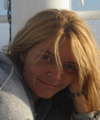
Barbara is a PhD graduate in Earth Sciences. She is presently working as an assistant at the University of Florence in the Earth Sciences Department. She also works in collaboration with Patrizia Ziveri. Barbara is interested in knowing how coccolithophores vary between the water column and the sediment. She studies water samples as well as box-core and deep-sea core samples. Barbara has studied coccolithophores in the north-west part of the Atlantic Ocean. She has used this study to trace changes in the surface circulation in that area. She is also interested in the relationship of living coccolithophores to their environment. During her PhD, Barbara took part in several cruises, so she also had the opportunity to sample and analyze coccolithophores in the Mediterranean Sea.
When not working, Barbara likes spending time with her family and friends. She takes yoga classes and she really likes to play tennis and to go swimming. She loves to go to the cinema, theaters and especially opera. She also loves cooking food for everybody.
Carl Isaacson, Graduate Student
Oregon State University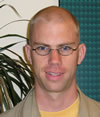
Carl is a graduate student in the department of Chemistry at Oregon State University. He is interested in what happens to man-made chemicals in the
environment. Currently he is demonstrating the usefulness of a method he developed to measure the ground water pollutant 1,4-dioxane (dioxane). To
determine the fate of the dioxane, the isotope ratios will be analyzed. Carl wants to know if the microbial population at the site is capable of degrading (breaking down)
dioxane. Microbes are known to prefer to consume any compound with a lighter isotope before they consume compounds with a heavier isotope. By monitoring the ratio of the
light isotope to the heavy isotope, Carl can assess the ability of the microbes to degrade (break down) dioxane. Through participation in this cruise he hopes to learn more about the utility and limitations of stable isotope analysis. When not in lab, running, hiking, eating and reading fill his time.
Orest E. Kawka, Research Scientist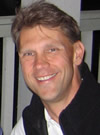
Orest is a Michigan-based scientist who has conducted research and in
chemical oceanography, organic geochemistry, environmental and atmospheric
chemistry, and ground water and soil monitoring. He has also used "remote
sensing" instruments to measure oceanographic processes and to monitor the
environment. His current interests are in developing projects which combine
state-of-the-art science technologies with ecosystem monitoring.
When he isn't working, Orest likes road and mountain biking, skiing,
volleyball, golfing and weekend morning political/social discussions with
friends over coffee at the local
cafe. He is also currently learning to sail.
Otto Pope,
Volunteer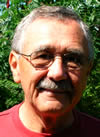
Otto Pope is retired, after working 37 years for the Ford Motor Company, in Dearborn Michigan. He was a Body Designer for most of his career and spent the last 15 years as a Design Manager in the Luxury Car and Light Truck Studios. In addition to supervising designers, he was responsible for CAD-CAM Design training, off campus recruiting, and emerging software evaluation.
He is a member of the team assisting his brother, Dr. Brian Popp, and Dr. Fred Prahl with gathering sea water samples and routine lab work.
Since work no longer takes any of Otto's time, he is free to play golf, travel, and build and fly model and full size experimental aircraft. Otto lives in Green Oak Township, Michigan, about 10 miles north of Ann Arbor.
Brian Popp, Professor
University of Hawaii, Department of Geology and Geophysics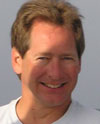
Brian is a professor of Geology and Geophysics at the University of Hawaii. Brian is interested in a number of research projects, all involving the use of stable isotopes. Stable isotopes are elements that have the same number of protons and electrons but different numbers of neutrons. So, they have different weights or masses. These masses react slightly differently during chemical or biochemical reactions. They can give us important environmental information that allows us to say things about how organisms in the ocean are responding global climate change, or have responded in the past to such changes.
The research partnership with Dr. Fred Prahl is ideal since Fred is an expert in the identification and separation of key biomarkers necessary for us to measure their isotopic composition. Research on these key biomarkers in the ocean has taken Brian to several sites, including the subarctic Pacific, Bering Sea, subtropical Pacific near Hawaii and the Gulf of California. All of these sites have one thing in common that is very important to Brian - great deep sea fishing! When not on the ocean performing experiments and collecting samples, Brian likes to fish. He also enjoys kite sailing, SCUBA diving, spearfishing and snow skiing.
Fred Prahl, Professor
Oregon State University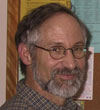
Fred is a professor of chemical oceanography at Oregon State University. He is interested in organic molecules, particularly those whose chemical structures are unique to specific creatures living in the sea. Such molecules are called 'biomarkers'. In doing his research, Fred collects water and sediment samples from the ocean. He identifies and analyzes the biomarkers in these samples. In this way, he learns about the present and past life history of the specific sea creature that made the biomarker. This information helps us to understand Earth processes such as climate change. Fred's field of oceanographic research is known as marine organic geochemistry.
Fred has done much of his field work over the years in his backyard off Oregon and Washington. But, he has also ventured elsewhere in the Pacific Ocean, such as 100 km off the north coast of Oahu, Hawaii, throughout the fjords of SE Alaska and now in the Gulf of California. The Gulf of California (or Sea of Cortez) is the site of study for the present cruise aboard the RV New Horizon. When not pursuing the mysteries of marine organic geochemistry, Fred enjoys woodworking, cycling, hiking and shooting pool.
Lee Putman, Volunteer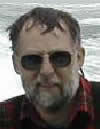
Lee Putman is a former millwright and dock mechanic supervisor (Alaska
Marine Highway). Lee is busy helping his son with his 4H sheep project and Boy
Scouts. His interests are fishing for albacore, fishing for anything, boats
and anything related to saltwater. Before he was injured, he was involved with
the Ketchikan Volunteer Search and Rescue High Angle Search and Rescue and Dive Rescue teams. Six years ago Lee was diagnosed with colon cancer. After surgery he fought hard and a year ago was determined to be cancer free. When not working, Lee likes fishing and working on boats.
Terri Rust, Technician
University of Hawaii
Terri is a laboratory/research technician. She is in charge of a chemical analysis facility at the University of Hawaii. She received an undergraduate degree in geology from Duke University. Then she studied methane gas in an estuary for her Master of Science thesis in oceanography. This work led to an interest in using stable isotopes as a tool for understanding the behavior of methane, an important greenhouse gas. As manager of the University of Hawaii isotope laboratory, she works with a wide variety of samples. Some of these are plant tissues, animal tissues, and gases in seawater and sediments. She prepares the samples and analyzes them to find out their stable isotopic composition. She enjoys the challenge of maintaining the lab’s many instruments. She also enjoys helping the many students and researchers who use the lab to analyze their samples. Most of all, she looks forward to getting out in the field and actually collecting the samples! Terri has had the opportunity to participate in many oceanographic research cruises. She has gone to such fascinating places as Antarctica, the Arctic, and 2000 m below the surface of the ocean, where she visited some active hydrothermal vent fields.
Sarah Walinsky, Undergraduate Student
Oregon State University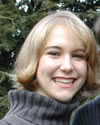
Sarah is a third year undergraduate honors college student at Oregon State
University. Currently she is working with Dr. Fred Prahl on a project
pertaining to the organic chemistry of samples extracted from a previous cruise
to Alaska. She has been using this amazing experience in the lab to gain a
better understanding of how science is used in the lab. This experience will also help her figure out where she wants to go with her education.
In her free time Sarah enjoys volunteering at the Humane Society, learning pottery, reading, cooking, eating and spending time with family and friends. She is also very involved with her sorority on campus.
Shannon Weniger, Instructor
Wolf Creek Job Corps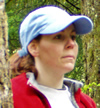
Umpqua Community College
Shannon Weniger is a teacher of Adult Basic Education, mainly mathematics, at Wolf Creek Job Corps in Glide, OR. She started working for Umpqua Community College at the Job Corps site in 1996. She teaches students ranging in age from 16 to a possible 26. These students come to the program with many different levels of skills. She has taught reading, cultural diversity, parenting, math, personal finance, and (recently) ocean science. She greatly enjoys it when a student's "lightbulb" turns on. She will be participating in the cruise as a volunteer teacher at sea.
When not working, Shannon enjoys her family, camping, gardening, and various volunteer activities with youth.
Patrizia Ziveri, Associate Professor
Free University Amsterdam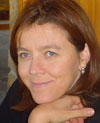
Patrizia is an associate professor at the Free University of Amsterdam. Patrizia will not be going on this cruise, but she has gone to sea in the past with some of these scientists. Her research is an important part of the research questions being studied on this cruise. She is interested in calcium carbonate particles which come from plants and animals in the ocean. When these marine organisms die, their remains drop onto the deep seafloor as particles. They remain in the sediment on the ocean floor. The particles give us important information about the ocean and the environment in the past. The information also tells us more about the global carbon cycle. Patrizia is also interested in climate change and its effect on the ecology of marine organisms. Patrizia has given us permission to use the beautiful images of coccolithophores on the home page of this website (taken by Saskia Kars). Find out more about coccolithophores here or here. Patrizia's work sites have included the Indian Ocean, North Atlantic, Mediterranean, North Pacific, and the California borderland. When not working, she enjoys playing with her daughter, bicycling, and swimming.

|














